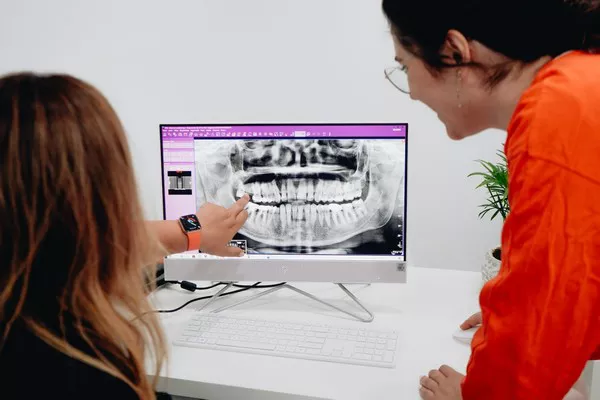Orthodontic treatment is a significant investment in one’s oral health and overall well-being. Understandably, one of the most common questions patients have is, “How long will my orthodontic treatment take?” While the desire for a quick answer is natural, the reality is that the length of orthodontic treatment varies significantly based on multiple factors. This article aims to provide a detailed overview of these factors, realistic time ranges, the importance of personalized consultations, and the long-term benefits of orthodontic treatment.
Acknowledge the Desire for a Quick Answer
At the outset, it’s essential to acknowledge that patients seeking orthodontic treatment often want a straightforward answer regarding the duration of their treatment. However, there is no “one-size-fits-all” answer to this question. The length of orthodontic treatment is influenced by numerous variables that are unique to each patient. Understanding these variables is crucial in setting realistic expectations and achieving the best possible outcomes.
Factors That Influence Treatment Time
Several key factors influence the duration of orthodontic treatment. These include the severity of the orthodontic issue, the type of orthodontic appliance used, the patient’s age, and compliance with the treatment plan. Let’s delve deeper into each of these factors:
Severity of the Case
The complexity of the orthodontic issue plays a significant role in determining the treatment timeline. Mild cases, such as slight crowding or minor spacing issues, typically require less time to correct compared to more complex cases involving severe crowding, significant spacing, or complex bite problems like overbites, underbites, and crossbites.
Mild Cases: Minor crowding or spacing can often be resolved relatively quickly. Treatment in such cases might take anywhere from six months to a year.
Moderate Cases: Issues such as moderate crowding or spacing, and some bite misalignments may take longer, typically ranging from one to two years.
Severe Cases: Severe orthodontic problems, including major bite misalignments and significant crowding or spacing, can require extensive treatment, often taking two to three years or even longer.
Type of Orthodontic Appliance Used
The type of orthodontic appliance used also significantly impacts the treatment duration. Different appliances have different mechanisms and efficiencies.
Traditional Braces: Metal or ceramic braces are among the most common and effective orthodontic treatments. They are versatile and can address a wide range of issues. Treatment with traditional braces generally takes between one to three years.
Clear Aligners: Clear aligners, such as Invisalign, are a popular alternative to traditional braces. They are often used for mild to moderate cases and can sometimes shorten treatment time. However, they require strict compliance to be effective. Treatment with clear aligners typically ranges from six months to two years.
Lingual Braces: These braces are placed on the inside of the teeth, making them less visible. They work similarly to traditional braces but might take slightly longer due to their placement and the difficulty of adjustments.
Other Appliances: Additional appliances such as palatal expanders, headgear, or space maintainers may be used to address specific issues and can influence the overall treatment duration.
Patient’s Age
Age is another critical factor in orthodontic treatment duration. Orthodontic treatment tends to be more efficient in children and teenagers compared to adults. This is primarily due to the ongoing growth and development in younger patients, which can facilitate quicker adjustments.
Children and Teenagers: Because their jaws and teeth are still developing, treatment can often be completed more quickly and effectively. Typical treatment times range from one to two years.
Adults: In adults, bones have stopped growing, which can make tooth movement slower and more complex. Adult treatment generally takes longer, often ranging from one to three years.
Compliance with Treatment
Compliance with the orthodontist’s instructions is crucial for the timely progression of treatment. Non-compliance can significantly extend the treatment duration.
Appointment Attendance: Regular appointments are essential for adjustments and monitoring progress. Missing appointments can delay treatment.
Following Instructions: Adhering to guidelines regarding the care and maintenance of braces or aligners, such as avoiding certain foods and wearing rubber bands as prescribed, is vital.
Oral Hygiene: Maintaining excellent oral hygiene prevents complications like cavities and gum disease, which can delay treatment.
see also:Navigating Orthodontic Retainer Costs
Provide Realistic Time Ranges
It’s important to provide patients with realistic time ranges for their orthodontic treatment. Offering general estimates can help set appropriate expectations.
Minor Adjustments: For cases requiring minor adjustments, such as slight spacing or crowding, treatment can often be completed in several months to a year.
Moderate Adjustments: More significant spacing or crowding, or moderate bite issues, typically require treatment times ranging from one to two years.
Complex Cases: Severe orthodontic problems, including major bite misalignments and significant spacing or crowding, can take two to three years or more to resolve.
It’s also crucial to avoid giving false hope of very short treatment durations. Orthodontic treatment is a process that requires time to ensure that the teeth move correctly and that the results are stable and lasting.
Emphasize the Importance of a Personalized Consultation
An accurate estimate of the treatment duration can only be provided after a personalized consultation with an orthodontist. This step is essential for several reasons:
Assessment of Individual Needs: Each patient’s orthodontic issues are unique. An in-person evaluation allows the orthodontist to thoroughly assess the specific needs and challenges of the case.
Discussion of Treatment Options: During the consultation, the orthodontist can discuss the various treatment options available, including the pros and cons of each appliance type.
Customized Treatment Plan: Based on the evaluation, the orthodontist can create a customized treatment plan that outlines the expected duration and stages of treatment.
During a consultation, patients can expect a comprehensive examination, which may include:
X-rays: To provide a detailed view of the teeth and jaw structure.
Photographs: To document the current state of the teeth and smile.
Digital Scans: To create accurate models of the teeth and bite.
These diagnostic tools help the orthodontist develop a precise and effective treatment plan tailored to the patient’s needs.
see also:How Much Does Orthodontic Treatment Cost?
Focus on the Long-Term Benefits of treatment
While the duration of orthodontic treatment is a significant consideration, it’s equally important to focus on the long-term benefits that come with achieving a healthy, functional, and confident smile.
Beyond Aesthetics
Orthodontic treatment offers numerous benefits that go beyond improved aesthetics. Some of these benefits include:
Improved Bite Alignment: Correcting bite issues can enhance chewing efficiency, reduce the risk of excessive wear on teeth, and alleviate jaw pain.
Better Oral Health: Properly aligned teeth are easier to clean, reducing the risk of cavities, gum disease, and other oral health problems.
Enhanced Speech: In some cases, orthodontic treatment can help improve speech impediments caused by misaligned teeth or jaws.
Increased Self-Confidence: A beautiful smile can boost self-esteem and confidence, positively impacting social interactions and overall quality of life.
Long-Term Stability
Achieving and maintaining a healthy smile requires a commitment to follow-up care and retention. After active treatment, wearing retainers as prescribed is crucial to maintaining the results. Retainers help keep the teeth in their new positions and prevent relapse.
Conclusion
In conclusion, the length of orthodontic treatment varies widely based on several factors, including the severity of the case, the type of appliance used, the patient’s age, and compliance with the treatment plan. While minor adjustments can be completed in several months to a year, more complex cases may require two to three years or more. An accurate estimate of treatment duration can only be provided after a personalized consultation with an orthodontist, who can assess the individual’s needs and create a customized treatment plan. Despite the time commitment, the long-term benefits of orthodontic treatment—including improved oral health, enhanced functionality, and increased self-confidence—make it a worthwhile investment in one’s overall well-being.
FAQs about Duration of Orthodontic Treatment
1. What is the long duration of orthodontic treatment?
Orthodontic treatment duration can vary significantly based on the complexity of the case and the type of braces used. On average, treatment lasts between 18 to 24 months, but more complex cases can take up to 3 years or longer. Factors influencing the duration include the severity of the dental issues being corrected, the type of orthodontic appliances used, patient compliance with the treatment plan, and biological response to the treatment.
2. Is 2 years a long time for braces?
Two years is considered a standard duration for braces. While it might seem like a long time, this period allows for gradual and controlled movement of the teeth, ensuring stable and lasting results. Most orthodontic treatments fall within the 18 to 24 months range, so a two-year timeframe is quite typical and necessary for comprehensive correction of dental misalignments.
3. Can braces be done in 3 months?
Braces typically cannot achieve significant results in just 3 months. Orthodontic treatment requires time to safely and effectively move teeth into their proper positions. While some minor adjustments or cosmetic improvements might be noticeable in a few months, comprehensive treatment usually takes much longer. There are accelerated orthodontic treatments available that can shorten the duration, but even these methods usually take at least 6 to 9 months, depending on the case’s complexity.
4. What is the minimum time for braces?
The minimum time for braces varies, but for very mild cases, treatment can sometimes be completed in about 6 months. These cases usually involve minor crowding or spacing issues. Accelerated orthodontic techniques, such as Propel or AcceleDent, can also help reduce treatment time, but it’s important to note that even with these methods, the treatment duration is often a minimum of several months.
You Might Be Interested In
































